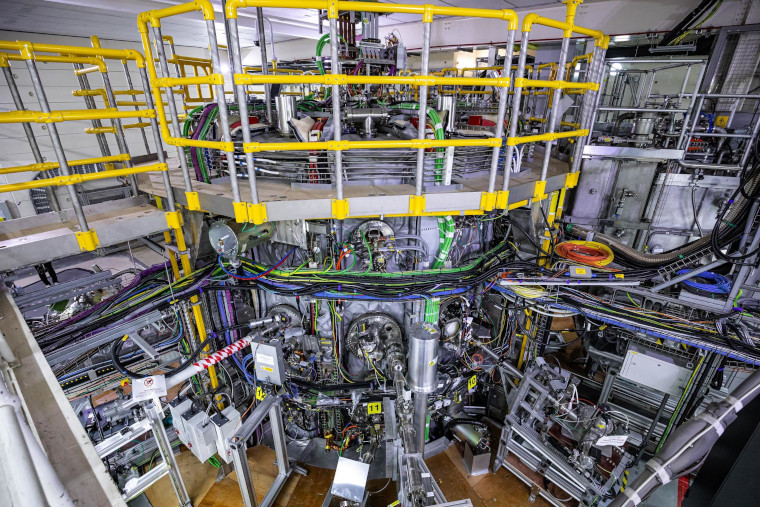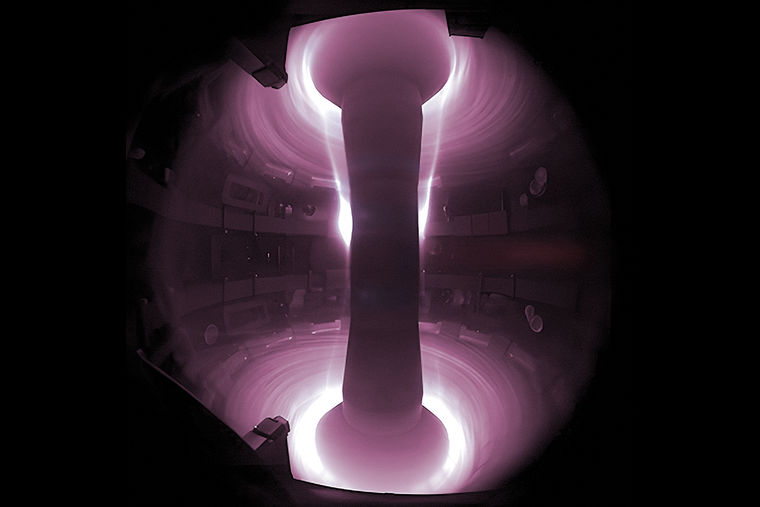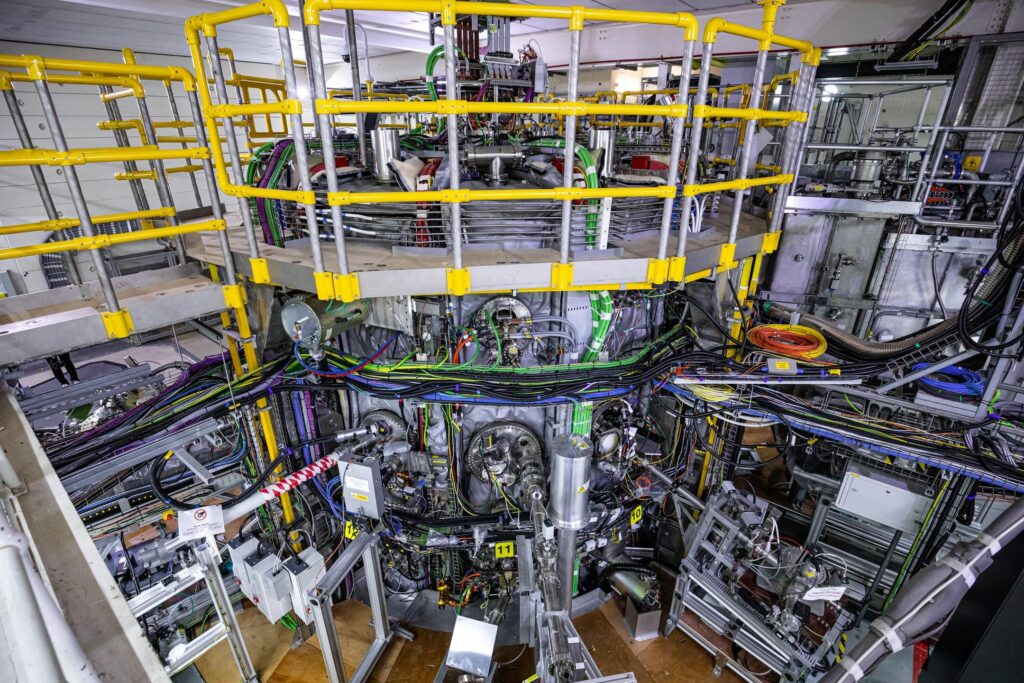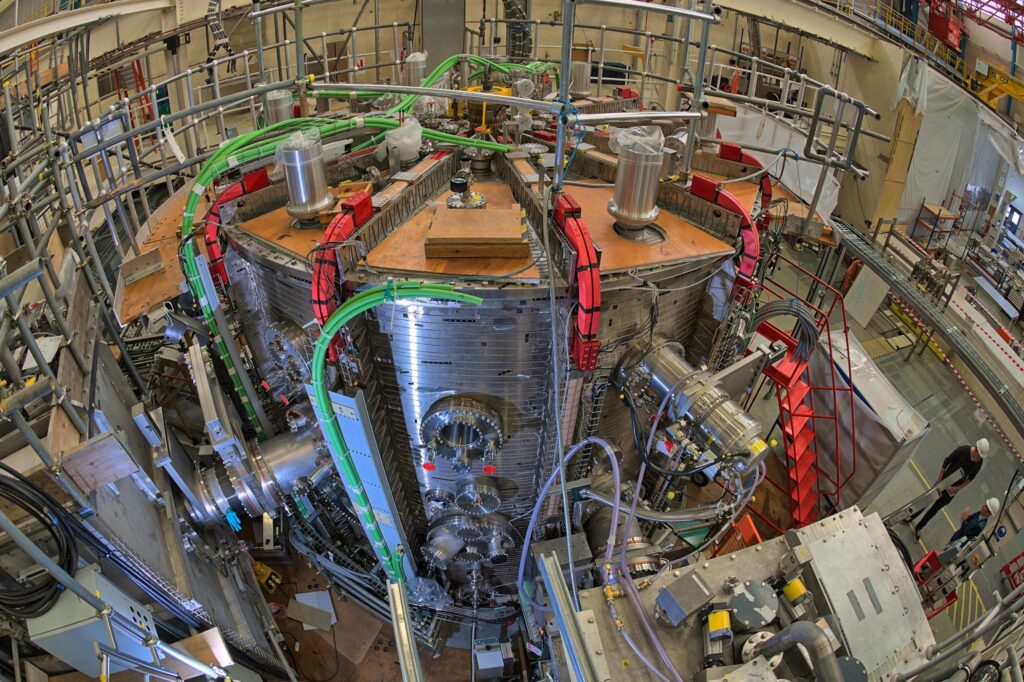Plasmas
Our Plasmas programme explores the behaviour of plasma - the hot gas that powers fusion reactions.
Technical discipline
Plasma is often called the fourth state of matter. In fusion research, it refers to a superheated gas. Understanding how plasma behaves under extreme conditions within a tokamak is essential to harnessing fusion energy.
Plasma science at UKAEA creates, observes and studies plasmas. Specifically, we study:
- how plasma behaves in fusion machines
- how to operate and control a fusion machine
- how to manage heat and fuel byproducts from a plasma
- how to develop models and simulations to predict plasma performance
- how to improve diagnostics to monitor plasma in real time
We collaborate globally with academic institutions, industry leaders, and international fusion initiatives to accelerate progress.

Capabilities
UKAEA’s expertise in plasmas includes:
- Theoretical Physics: Developing models to predict plasma behaviour in future power plants.
- World-Class Diagnostics: Capturing high-resolution data from live plasma experiments.
- Experimental Research: Using cutting-edge facilities like the Mega Amp Spherical Tokamak (MAST) Upgrade tokamak, where plasma reaches temperatures of over 30 million °C.
This expertise and knowledge is critical to overcoming the scientific and engineering challenges that stand between concept and commercial reality.
Research
MAST Upgrade
MAST Upgrade is UKAEA’s compact spherical tokamak and the world’s largest operational spherical tokamak. It plays a key role in testing how to manage the intense heat escaping from plasma.
MAST Upgrade has been carrying out experiments since 2020 and has achieved four ground breaking sets of experiments in that time. The fourth scientific campaign brought together more than 100 scientists from 37 institutions around the world, collectively they achieved almost 1,600 plasma pulses and carried out over 50 experiments, helping to answer the big questions in fusion physics.
MAST Upgrade: The world’s largest operational spherical tokamak
Tackling one of fusion energy’s biggest challenges: plasma exhaust.

Team expertise
Our team who work on plasma activities span the breadth of physics and engineering. Not only does the team produce novel theories, carry out complex analytical calculations, work with state-of-the-art numerical codes, and provide the necessary tools to design fusion plasmas, they also operate and maintain the UK’s flagship fusion experiment, MAST Upgrade.
Challenges
One of the key challenges MAST Upgrade focuses on is understanding and reducing the heat coming out of a super-hot plasma. The tokamak exhaust system (known as the ‘divertor’) takes the particles and heat ejected from the plasma and directs it onto surfaces within the tokamak. Tackling the plasma exhaust is a key issue that must be solved to achieve commercial fusion power.
The intense power loads that will be created in the large fusion machines in future power plants have the potential to damage the divertor components. The result of this would be that divertor components would require replacement every few years, making it difficult for fusion to become an economically competitive energy source. The challenge is to develop a divertor which can reduce the power loads to a manageable level; about the same as in a car engine. Experiments in MAST Upgrade are providing UKAEA with valuable information on how to cool the plasma enough, where it meets surfaces in the divertor, to ensure that any damage is minimal.
What makes MAST Upgrade particularly unique is that it is the first tokamak in the world to use a highly optimised Super-X divertor. This is a unique exhaust system which should mean divertor components will last much longer. Previous experiments on MAST Upgrade using the Super-X divertor have shown to be successful, reducing the heat load on the parts of the divertor by a factor of ten. This will help future power plants last longer and operate more efficiently.
Facilities
UKAEA uses advanced facilities to carry out plasma research, including:
- MAST Upgrade: A spherical tokamak exploring new plasma configurations. MAST Upgrade is currently the largest spherical tokamak in operation in the world. It has been in operation since 2020, with an expected lifetime out to the early 2030’s. The aim of the machine is to:
- investigate novel exhaust concepts
- de-risk the spherical tokamak as a future power plant
- extend the physics knowledge base in support of the broader fusion programme.
The operation of the MAST Upgrade facility permits a wide range of experiments to be performed, alongside diagnostic and advanced control development, training of operators and the use of MAST Upgrade as a facility for collaborators and commercial opportunities.
- Diagnostics Innovation Centre of Excellence (DICE): DICE has the ambition to become the world leading facility for diagnostic development and provision of diagnostic services to the whole fusion community. DICE is a facility equipped with state-of-the-art diagnostic laboratories. The greatest asset to DICE is our people and their extensive experience of diagnostics design, build, installation, analysis, operation and exploitation for MAST Upgrade, JET, and other tokamaks including ITER.


